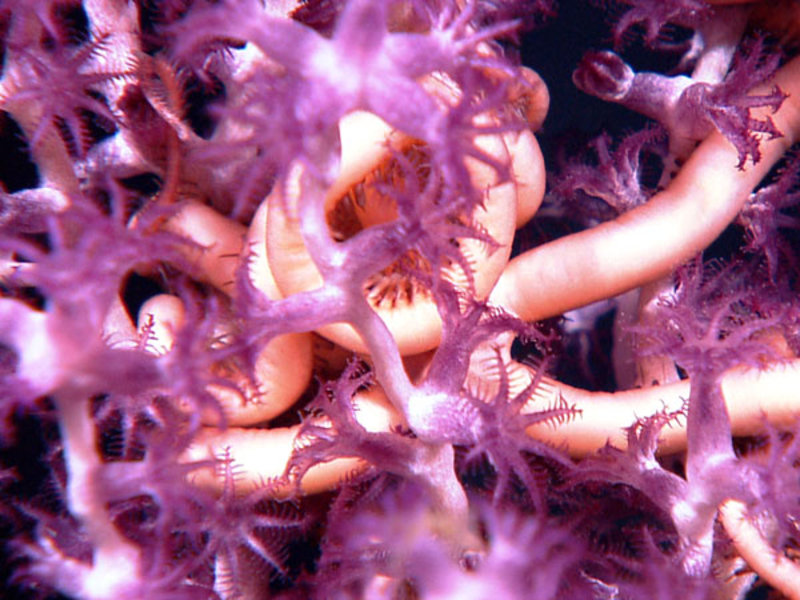
A close-up view of a brittle star intertwined with its host coral. Image courtesy of the NOAA Office of Ocean Exploration and Research, INDEX-SATAL 2010. Download larger version (jpg, 1.6 MB).

A close-up view of a brittle star intertwined with its host coral. Image courtesy of the NOAA Office of Ocean Exploration and Research, INDEX-SATAL 2010. Download larger version (jpg, 1.6 MB).
Brittle Stars
View spectacular video footage of brittle stars interwined in purple coral at approximately 1800 meters. The footage was captured by the Little Hercules ROV and camera platform during ROV dives from NOAA Ship Okeanos Explorer during the INDEX SATAL 2010 Expedition. Video courtesy of NOAA Okeanos Explorer Program, INDEX-SATAL 2010. Download (mp4, 26.7 MB)
July 25th marked the third dive of cruise leg 3, on an underwater volcano referred to as "Site G". Today’s dive started on the southeast slope of the volcano’s main cone at 1,926m depth. The seafloor was covered in yellow sediment with very scarce epifauna seen – mostly brittle stars. As we progressed upslope toward the southeast peak of the summit, the amount of exposed rock and abundances and diversity of fauna gradually increased. A dominant upwelling current was encountered. At approximately 1800m, a drastic change in substrate from soft mud to completely exposed basalt boulders were observed at the southeast peak of the summit. Very high abundances of large corals were encountered, especially bamboo corals and black corals, as well as a few sea fans and bubblegum corals. These corals were covered with many associates, especially brittle stars. Moving along the summit, we passed a ‘saddle’ between the north and southeast peaks. The seafloor here was also covered in yellow sediment with very scarce epifauna observed, similar to what was seen at the beginning of the dive. A seeming higher abundance of large burrows were encountered. This continued until we reached the northern peak of the summit, after which we moved southwest towards the southwest peak of the summit. During the last segment of the dive, the seafloor was totally covered with soft sediment with the exception of one large boulder seen at the end of the dive; this boulder contained abundant coral and sea lily fauna. The current at the summit of the volcano had fairly constant speed and heading (NW) throughout the dive.